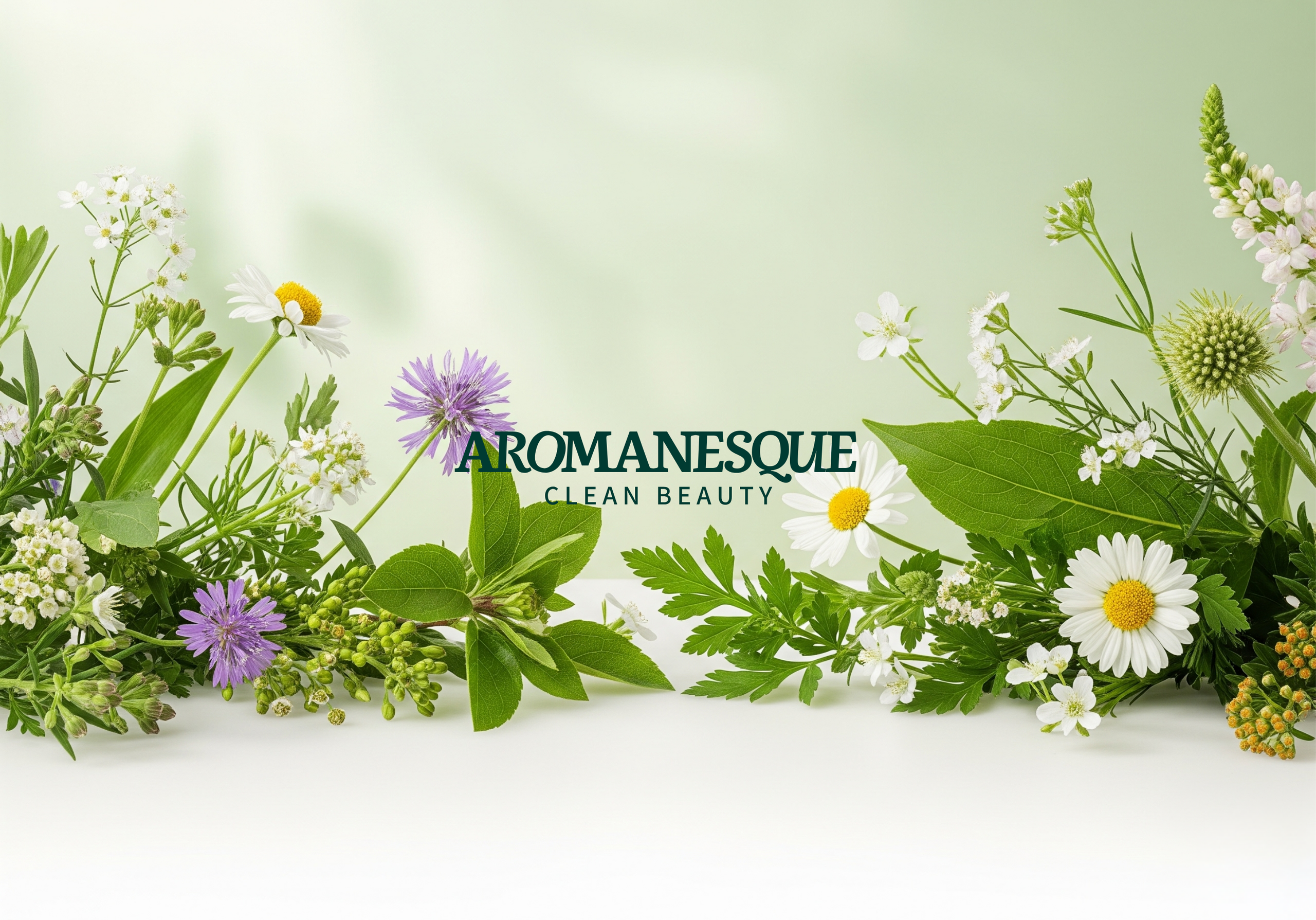Sonnenschutz ist ein unverzichtbarer Schritt in jeder Hautpflegeroutine, doch viele Menschen unterschätzen seine Bedeutung oder fühlen sich von der Auswahl überfordert. Bei so vielen Informationen – und Fehlinformationen – über Sonnenschutzmittel kann man leicht verwirrt sein, welche Art von Sonnenschutz man wählen soll, wie sie wirkt und warum sie so wichtig ist.
In diesem Beitrag erläutern wir die wichtigsten Unterschiede zwischen mineralischen und chemischen Sonnenschutzmitteln, erklären, was LSF wirklich bedeutet und zeigen Ihnen, wie Sie Sonnenschutz nahtlos in Ihre tägliche Hautpflege integrieren. Abschließend erklären wir, warum Aromanesque Mineral Sunscreens eine hervorragende Wahl für alle sind, die ihre Haut effektiv und sicher schützen möchten.
Mineralischer Sonnenschutz vs. chemischer Sonnenschutz: Was ist der Unterschied?
Lassen Sie uns zunächst einen der häufigsten Missverständnisse klären: den Unterschied zwischen mineralischen und chemischen Sonnenschutzmitteln. Beide Arten sollen Ihre Haut vor den schädlichen ultravioletten (UV-)Strahlen der Sonne schützen, tun dies jedoch auf grundlegend unterschiedliche Weise.
Mineralischer Sonnenschutz (physikalischer Sonnenschutz):
Mineralische Sonnenschutzmittel verwenden natürliche Inhaltsstoffe wie Zinkoxid und Titandioxid, um eine physikalische Barriere auf der Hautoberfläche zu bilden. Stellen Sie es sich wie einen Schutzschild vor, der UV-Strahlen reflektiert und streut, bevor sie in die Haut eindringen können. Diese Art von Sonnenschutzmittel wird oft wegen ihrer sofortigen Wirksamkeit bevorzugt – Sie sind sofort nach dem Auftragen geschützt. Mineralische Sonnenschutzmittel verursachen zudem weniger Hautreizungen und sind daher die erste Wahl für empfindliche Haut, einschließlich Personen mit Neigung zu Akne oder Ekzemen. Außerdem sind sie umweltfreundlicher und verzichten auf Chemikalien, die Meereslebewesen schädigen können.
Chemischer Sonnenschutz:
Chemische Sonnenschutzmittel enthalten dagegen synthetische Inhaltsstoffe wie Oxybenzon, Avobenzon oder Octinoxat. Diese absorbieren UV-Strahlen und wandeln sie in Wärme um, die dann von der Haut abgegeben wird. Chemische Sonnenschutzmittel wirken zwar, benötigen aber nach dem Auftragen etwa 15 bis 20 Minuten, um zu wirken. Einige ihrer Inhaltsstoffe werden mit Hautreizungen oder Umweltproblemen wie Korallenriffschäden in Verbindung gebracht.
Warum mineralischen Sonnenschutz wählen?
Mineralische Sonnenschutzmittel bieten mehrere Vorteile, die sie für viele zur besten Wahl machen:
Sanfter zur Haut:
Da sie auf der Haut verbleiben und nicht absorbiert werden, ist die Wahrscheinlichkeit geringer, dass sie Reizungen oder allergische Reaktionen hervorrufen.
Sofortiger Schutz: Keine Wartezeit – Ihre Haut ist ab dem Moment des Auftragens geschützt.
Breitband-Abwehr:
Hochwertige mineralische Sonnenschutzmittel schützen sowohl vor UVA-Strahlen (alternde Wirkung) als auch vor UVB-Strahlen (brennende Wirkung).
Umweltfreundlich:
Da sie frei von Chemikalien sind, die aquatische Ökosysteme schädigen, sind sie eine nachhaltige Option.
SPF verstehen: Was bedeutet es wirklich?
Sie haben wahrscheinlich schon LSF-Werte auf Sonnenschutzflaschen gesehen – LSF 15, LSF 30, LSF 50 – aber was bedeuten sie eigentlich? LSF steht für Lichtschutzfaktor und gibt an, wie gut ein Sonnenschutzmittel Ihre Haut vor UVB-Strahlen schützt. Diese Strahlung verursacht Sonnenbrand und trägt zu Hautkrebs bei.
Hier ein einfacher Vergleich: Wenn Sie normalerweise nach 10 Minuten in der Sonne ohne Schutz einen Sonnenbrand bekommen, können Sie mit einem Sonnenschutzmittel mit Lichtschutzfaktor 30 theoretisch 30-mal länger (300 Minuten) in der Sonne bleiben, ohne einen Sonnenbrand zu bekommen. Dies ist jedoch nur eine grobe Schätzung – Schwitzen, Schwimmen und der Hauttyp können die Dauer des Schutzes beeinflussen.
Wichtige Fakten zum Lichtschutzfaktor:
UVB vs. UVA:
Der Lichtschutzfaktor (LSF) misst in erster Linie den UVB-Schutz, nicht den UVA-Schutz, der tiefer eindringt und vorzeitige Hautalterung sowie langfristige Schäden verursacht. Achten Sie auf die Angabe „Breitband“ auf dem Etikett, um Schutz vor beiden Strahlen zu gewährleisten.
Welchen Lichtschutzfaktor sollten Sie verwenden:
Die American Academy of Dermatology empfiehlt für die tägliche Anwendung mindestens LSF 30. LSF 30 blockiert etwa 97 % der UVB-Strahlen, LSF 50 hingegen 98 % – höhere LSFs bieten eine abnehmende Wirkung.
Bewerbungsangelegenheiten:
Der eigentliche Schlüssel liegt darin, ausreichend aufzutragen (etwa einen Teelöffel für Ihr Gesicht) und alle zwei Stunden erneut aufzutragen, insbesondere nach dem Schwimmen oder Schwitzen.
Sonnenschutz in der Hautpflegeroutine: Warum er unverzichtbar ist
Sonnenschutz ist nicht nur für Strandtage wichtig – er ist täglich unerlässlich, unabhängig vom Wetter und Ihren Plänen. UV-Strahlen können Wolken und sogar Fenster durchdringen und Ihre Haut selbst an bewölkten Tagen oder in Innenräumen gefährden. Die tägliche Anwendung von Sonnenschutzmitteln beugt Folgendem vor:
- Sonnenbrand
- Vorzeitige Alterung (Falten, dunkle Flecken, schlaffe Haut)
- Hautkrebs
So verwenden Sie Sonnenschutzmittel in Ihrer Routine:
Wann:
Tragen Sie Sonnenschutzmittel als letzten Schritt Ihrer morgendlichen Hautpflegeroutine auf, nach der Feuchtigkeitscreme, aber vor dem Make-up. Mineralische Sonnenschutzmittel wirken sofort, während chemische 15 Minuten zum Einwirken benötigen.
Wie viel:
Verwenden Sie etwa einen Teelöffel (oder zwei Fingerlängen) für Gesicht, Hals und Ohren. Bei längerem Aufenthalt im Freien alle zwei Stunden erneut auftragen.
Täglich:
Da die UV-Belastung kumulativ ist, ist eine konsequente Anwendung für die langfristige Gesundheit der Haut von entscheidender Bedeutung.
So wählen Sie ein gutes Sonnenschutzmittel aus: Warum Mineral-Sonnenschutzmittel von Aromanesque – Clean Beauty hervorstechen
Angesichts der unzähligen Optionen auf dem Markt kann die Wahl des richtigen Sonnenschutzmittels entmutigend sein. Hier erfahren Sie, worauf Sie achten sollten:
- Breitbandschutz: Deckt sowohl UVA- als auch UVB-Strahlen ab.
- LSF 30 oder höher: Ausreichend für den täglichen Gebrauch.
- Formel auf Mineralbasis: Sanfter und umweltfreundlich.
- Nicht komedogen: Verstopft die Poren nicht – entscheidend für zu Akne neigende Haut.
- Leicht und mischbar: Sollte sich angenehm anfühlen und auf allen Hauttönen unsichtbar aussehen.
Warum mineralische Sonnenschutzmittel von Aromanesque – Clean Beauty eine Top-Wahl sind
Mineralische Sonnenschutzmittel von Aromanesque erfüllen alle diese Kriterien und noch mehr:
- 100 % mineralische Formel: Hergestellt mit Zinkoxid und Titandioxid, sind sie sanft und ideal für empfindliche Haut.
- Breitband-Lichtschutzfaktor 30: Hoher Schutz vor UVA- und UVB-Strahlen.
- Leicht und unsichtbar: Lässt sich nahtlos verblenden, ohne einen weißen Schimmer zu hinterlassen.
- Antioxidantien-Boost: Mit Vitamin E angereichert, um zu nähren, mit Feuchtigkeit zu versorgen und gleichzeitig zu schützen.
- Umweltbewusst: Riffsicher und frei von schädlichen Chemikalien wie Oxybenzon.
Abschließende Gedanken: Machen Sie Sonnenschutz zum besten Freund Ihrer Haut
Sonnenschutz ist Ihr wirksamstes Mittel zur Vorbeugung von Sonnenschäden, Hautalterung und Hautkrebs. Ein mineralischer Sonnenschutz wie der von Aromanesque schützt nicht nur Ihre Haut, sondern ist auch sanfter und umweltfreundlicher. Der beste Sonnenschutz ist einer, den Sie täglich anwenden – wählen Sie also eine Formel, die sich gut anfühlt, zu Ihrer Haut passt und zu Ihrer Routine passt.
Profi-Tipp: Vernachlässigen Sie Bereiche wie Ohren, Hals und Hände nicht. Für Make-up-Träger kann ein mineralisches Sonnenschutzpuder zum Nachcremen verwendet werden.








